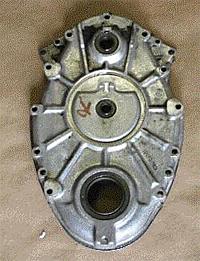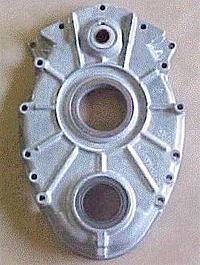





 |
||||
| sales@nookandtranny.com Phone (954) 572-8888, Fax (954) 572-8749 | ||||
 |
 |
 |
 |
 |
|
|
|||||||||||||||||||||||||
|
LT1 GEN II SMALL BLOCK CHEVY CYLINDER HEAD CASTING #'S |
|||||
| CASTING # | YEAR | CID | NOTES | ||
| 10125320 | 94-96 | 350 | LT1, Cast Iron, B-Body | ||
| 10128374 | 92-97 | 350 | LT1, Aluminum, 175/68cc ports, 53cc chamber | ||
| 10205245 | 93 | 350 | LT1, Aluminum 175/68cc ports | ||
| 10207643 | 94-96 | 350 | LT1, Aluminum, 175/68 cc ports | ||
| 10208890 | 94-96 | 265 | L99, Cast Iron | ||
| 10239902 | 96 | 350 | LT4, Aluminum, 195cc ports, 54.4cc chamber | ||
| 12529742 | 95-96 | 265 | L99, Cast Iron | ||
| 12551561 | 96 | 350 | LT1, aluminum | ||
| 12554290 | 94-96 | 350 | LT1, Cast Iron, B-Body | ||
| 12554291 | 95-96 | 265 | L99, Cast Iron | ||
| 12555690 | 96 | 350 | LT4, aluminum | ||
| 12551561 | 96 | 350 | LT1, aluminum | ||
| 12554290 | 94-96 | 350 | LT1, Cast Iron, B-Body | ||
| 14088526 | 92-97 | 350 | LT1, Aluminum | ||
|
|||||
|
||||||||||||
|
|||||||||||||||
|
||||||||||||||||||||||||||||||||
|
|||||||||||||||||||||||||||||
| LT1 FRONT TIMING COVERS | ||
 |
 |
|
|
CONVERTING FROM NON-VENTED TO VENTED OPTISPARK |
||
|
Some advantages of the vented Optispark are (1) the ventilation system allows for a longer life span and less misfires, (2) the bearing and drive method allow for longer bearing life, and (3) the larger diameter front seal reduces the change of oil leakage through the cover and into the Optispark. You can convert from a non-vented Optispark to a vented Optispark by changing the Optispark unit, the front timing cover to a 95-97 model, camshaft timing gear to a 95-97 model, adding the vacuum lines, and changing the Optispark extension harness to the later model. The camshaft does not necessarily need to be changed, but you will need to drill the cam centering hole deeper for the Optispark unit to slide in all of the way. We have a convenient kit available for those who wish to upgrade to the vented Optispark. |
||
|
||||||||||||
|
|
|
HOME ONLINE STORE PRODUCT LINES USED PARTS TRANSIT TIMES POLICIES CONTACT US LINKS |
|
|
|
All text and watermarked photos are property of Nook
& Tranny LLC, and are not permitted for use without written consent from Nook &
Tranny LLC. (C) 2008 Nook & Tranny LLC |